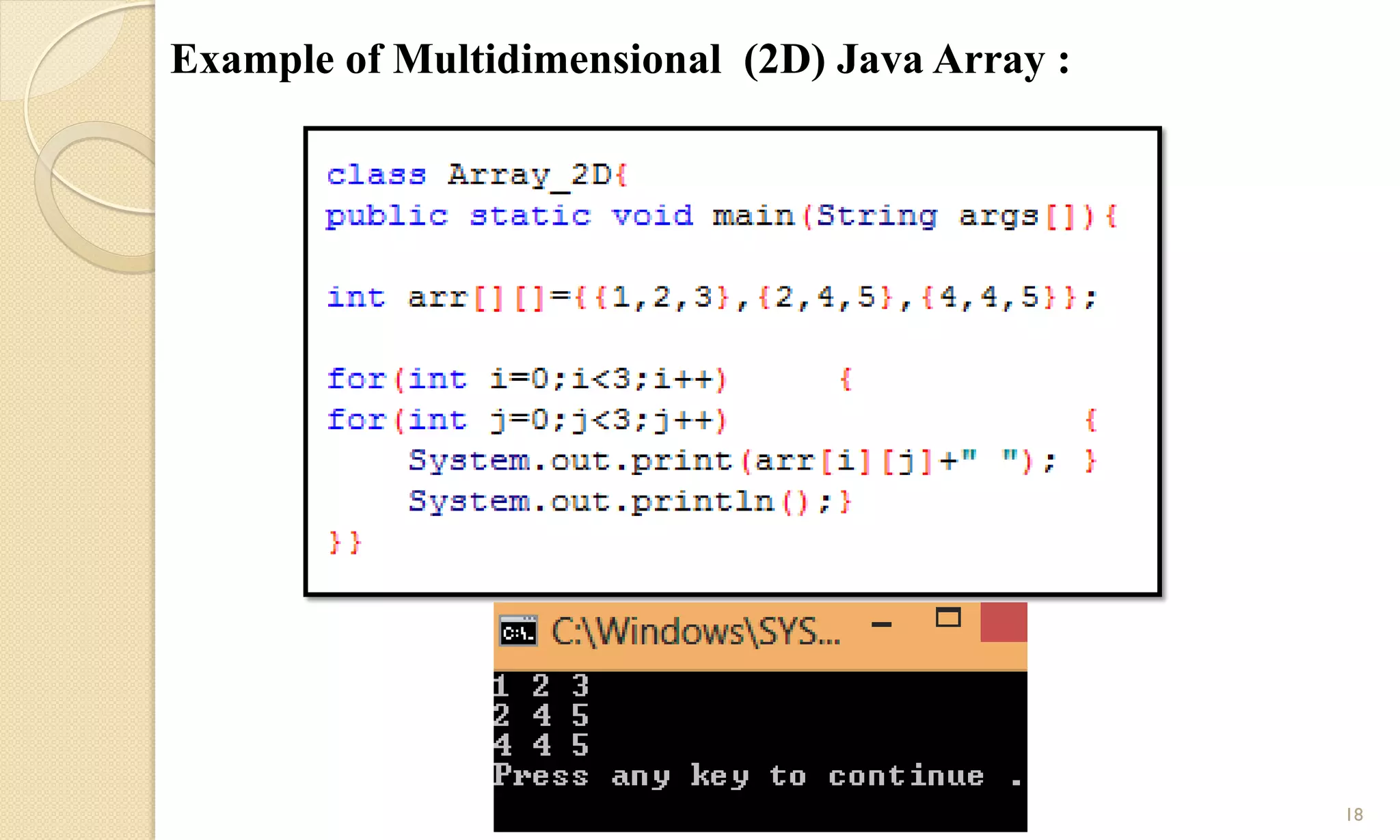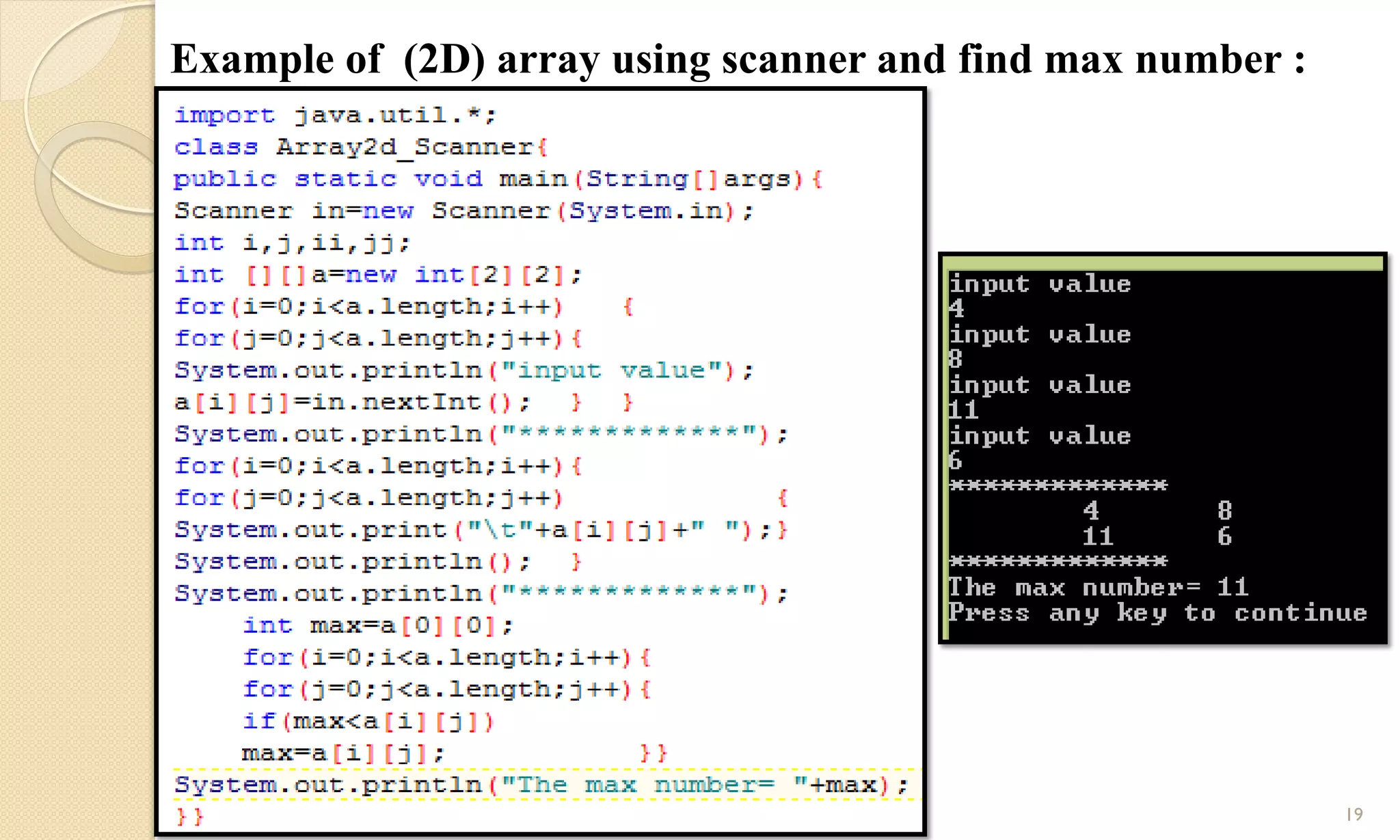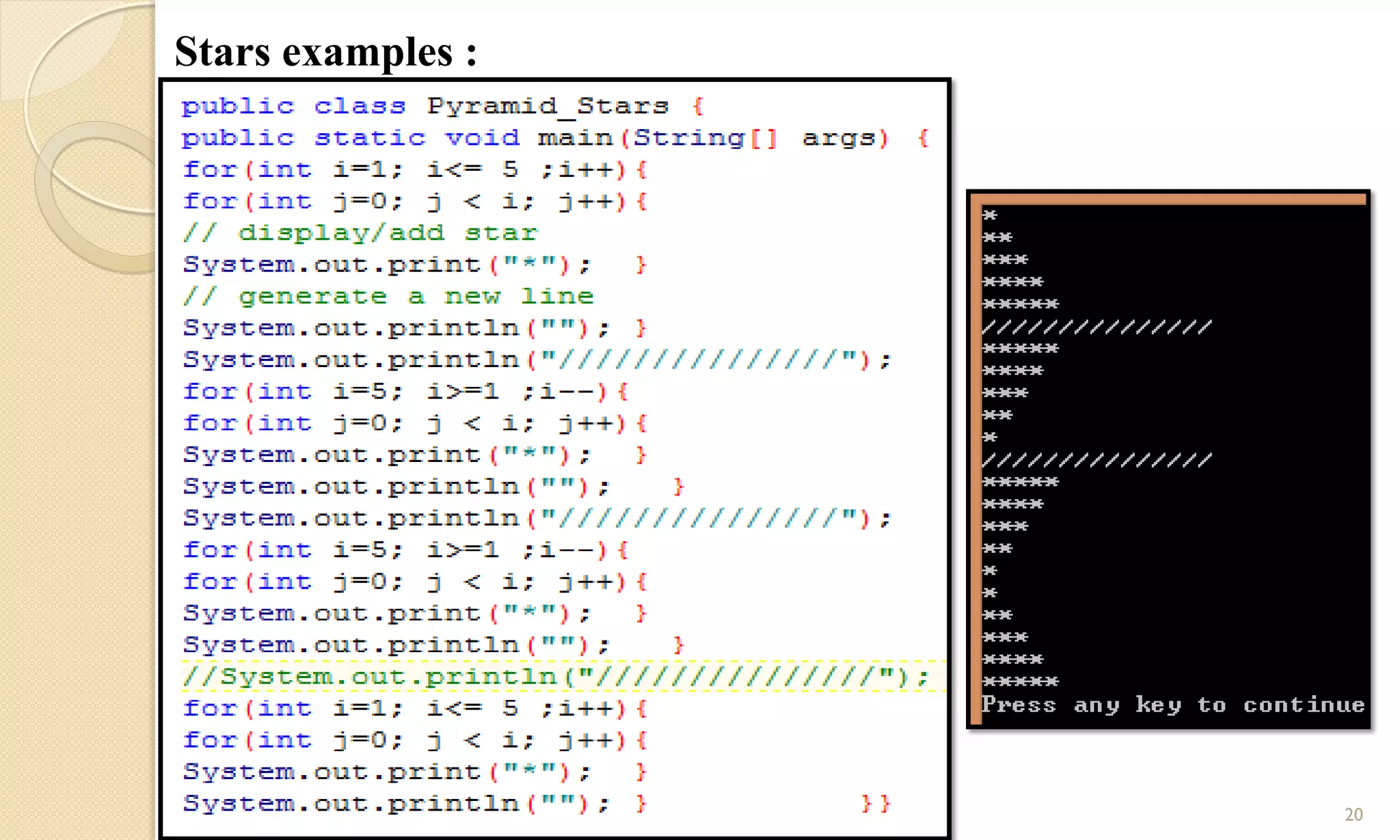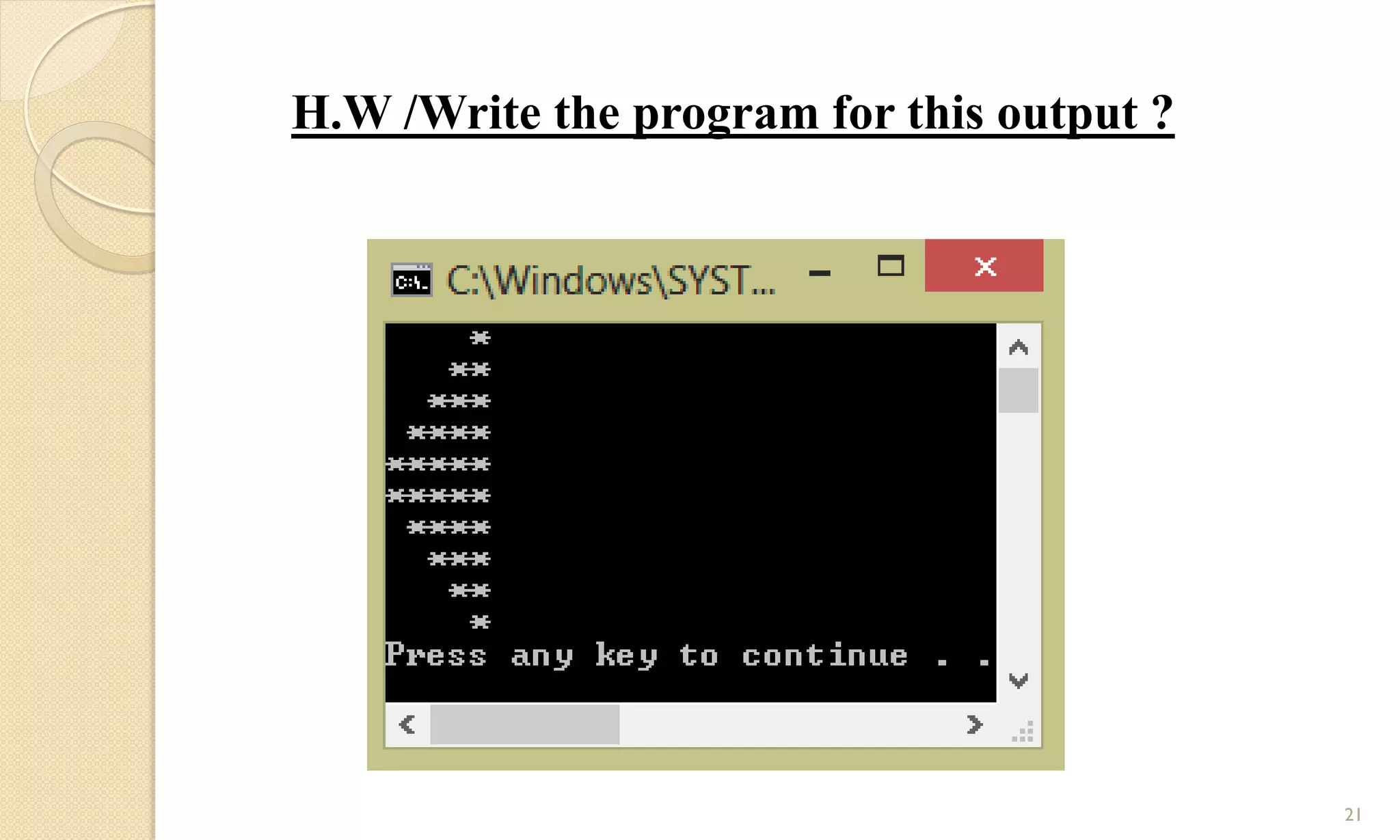This document discusses arrays in Java programming. It covers defining and creating single and multi-dimensional arrays, accessing array elements using indexes and loops, and performing operations like sorting and finding maximum/minimum values. Examples are provided for different array types like integer, string and character arrays, and operations like input/output, break/continue statements, and star patterns. Homework involves writing a program to produce a given output pattern.
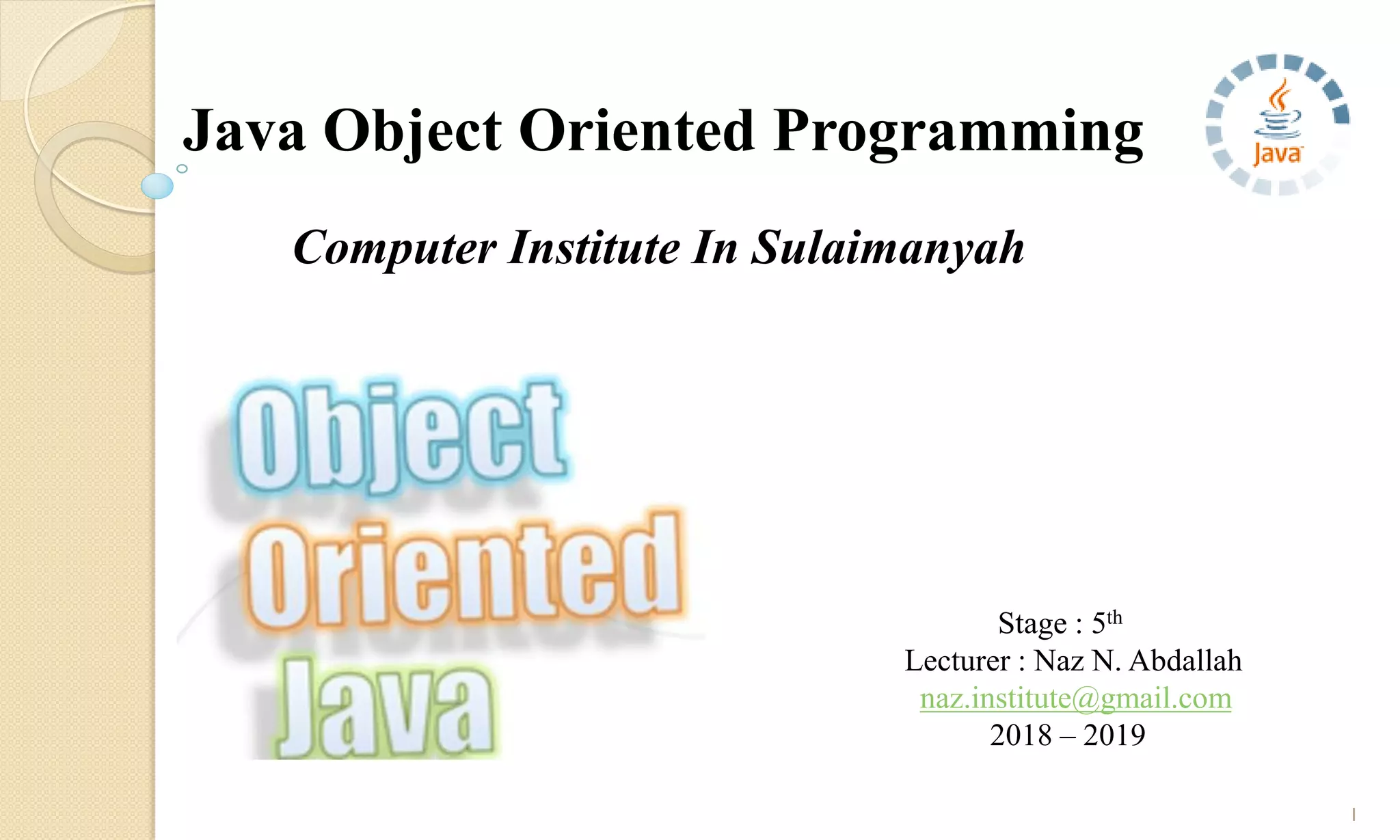
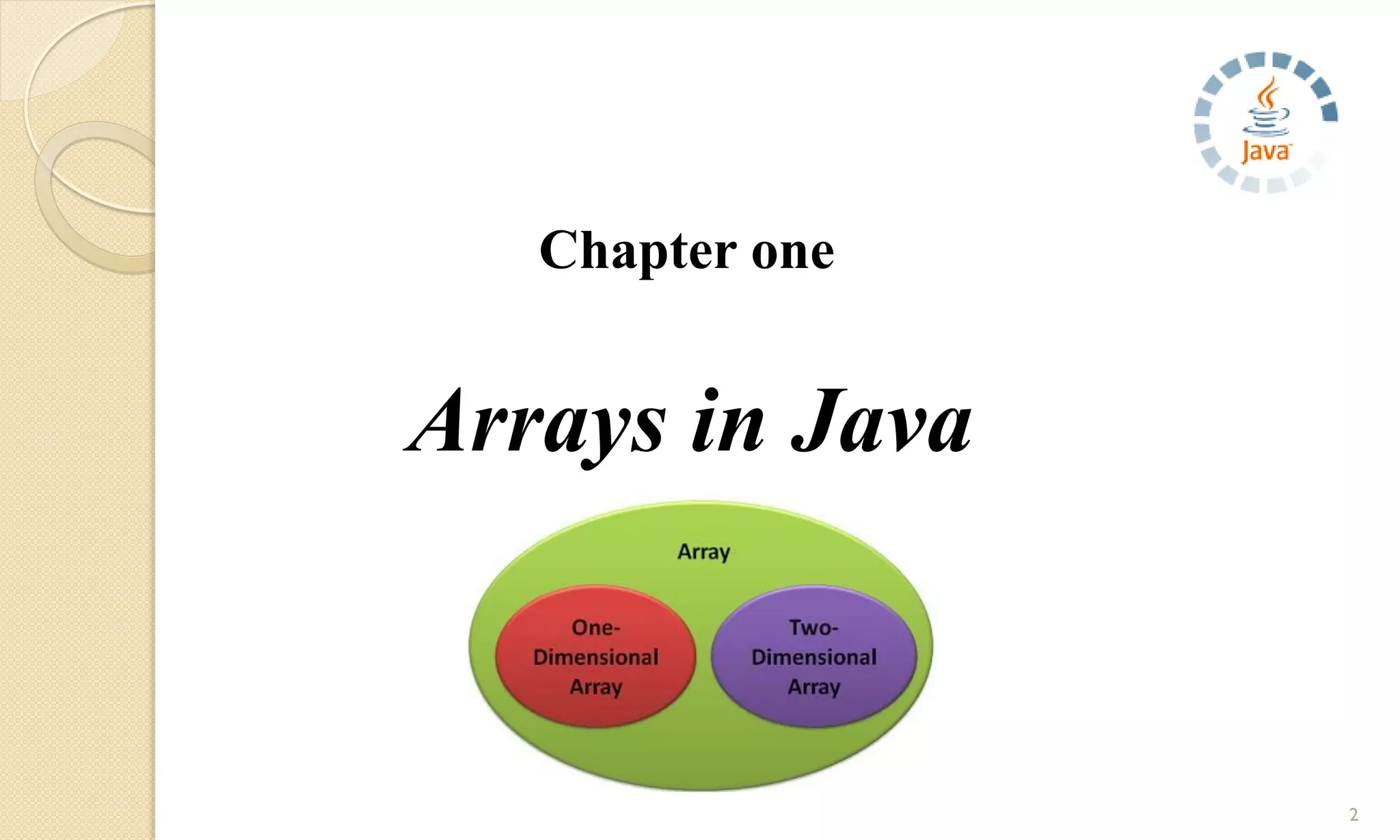
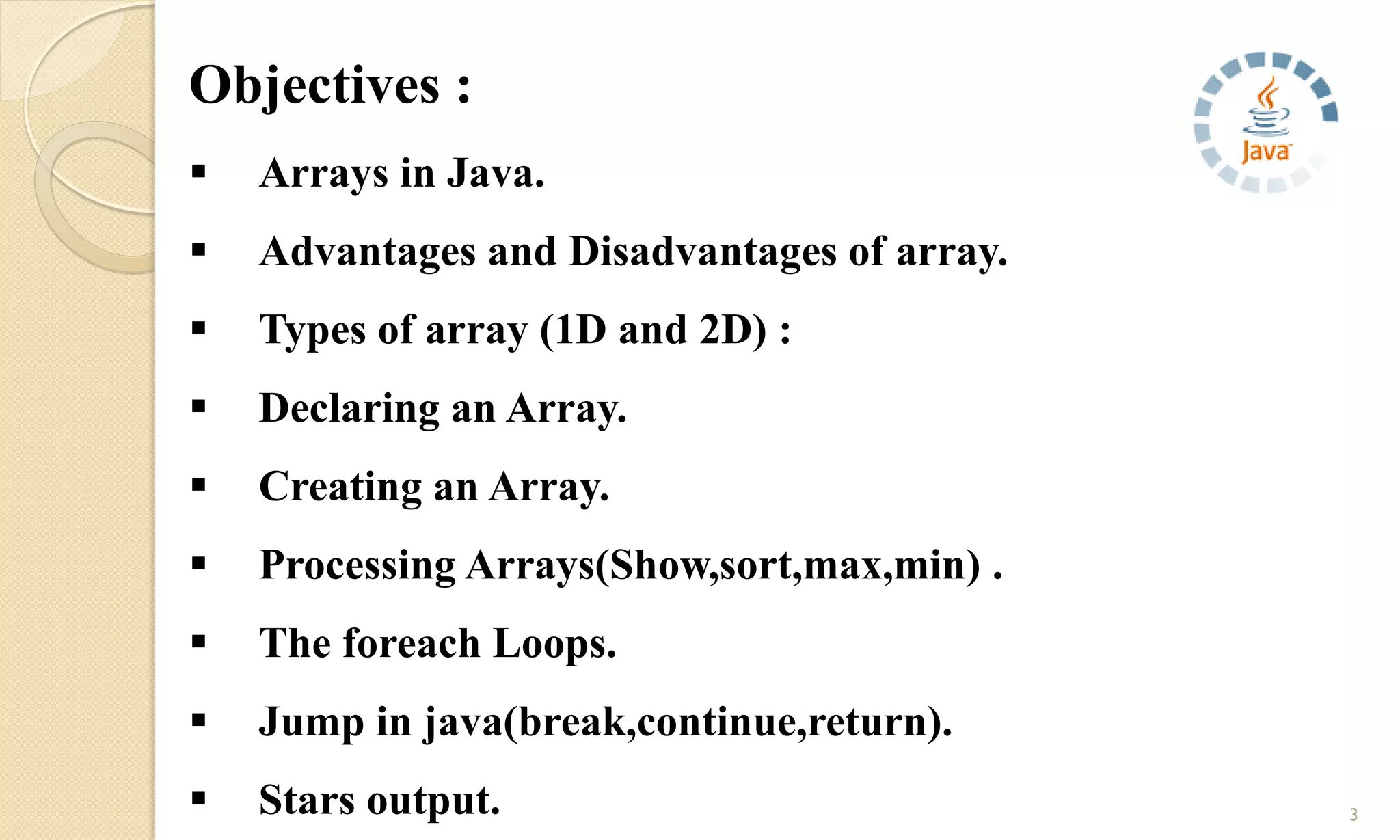
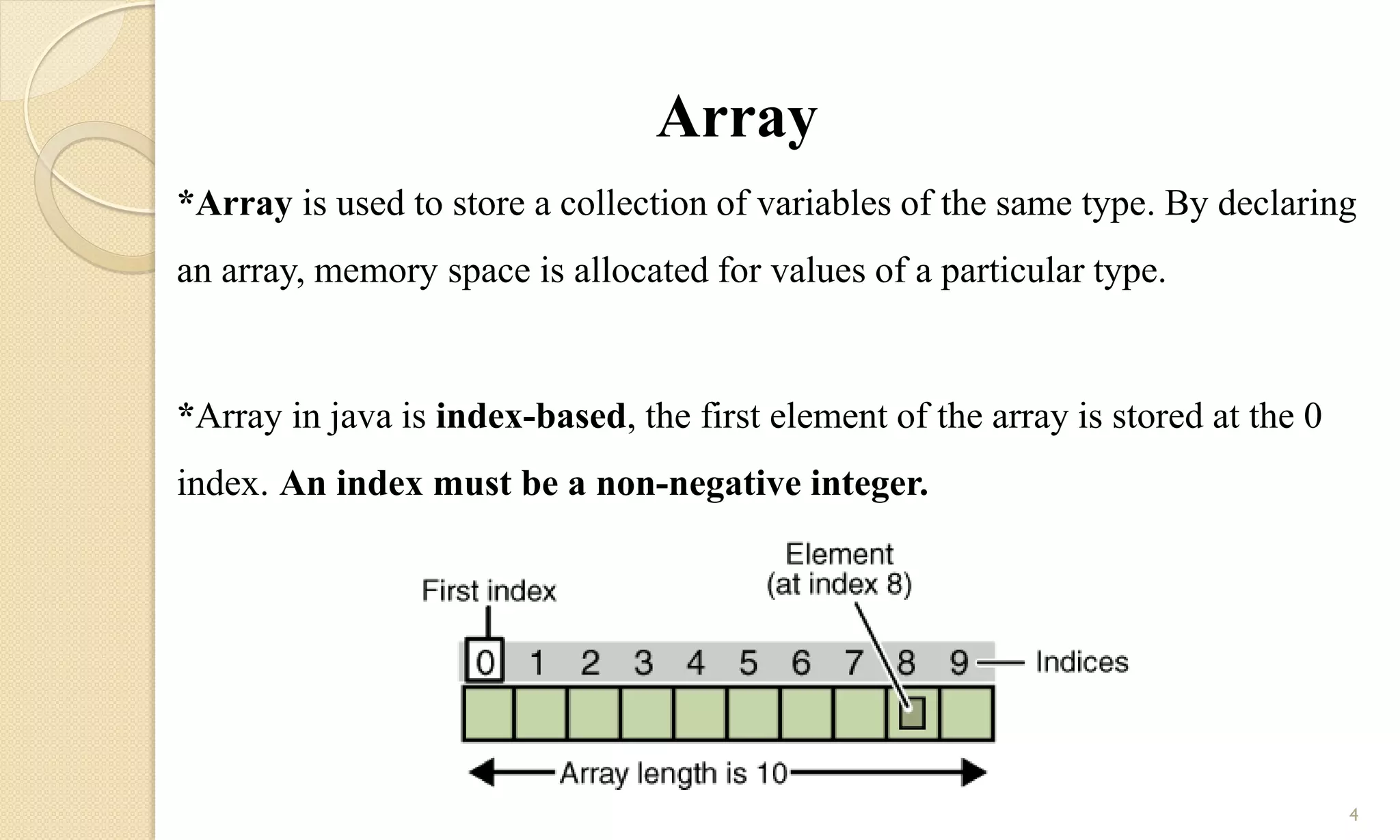
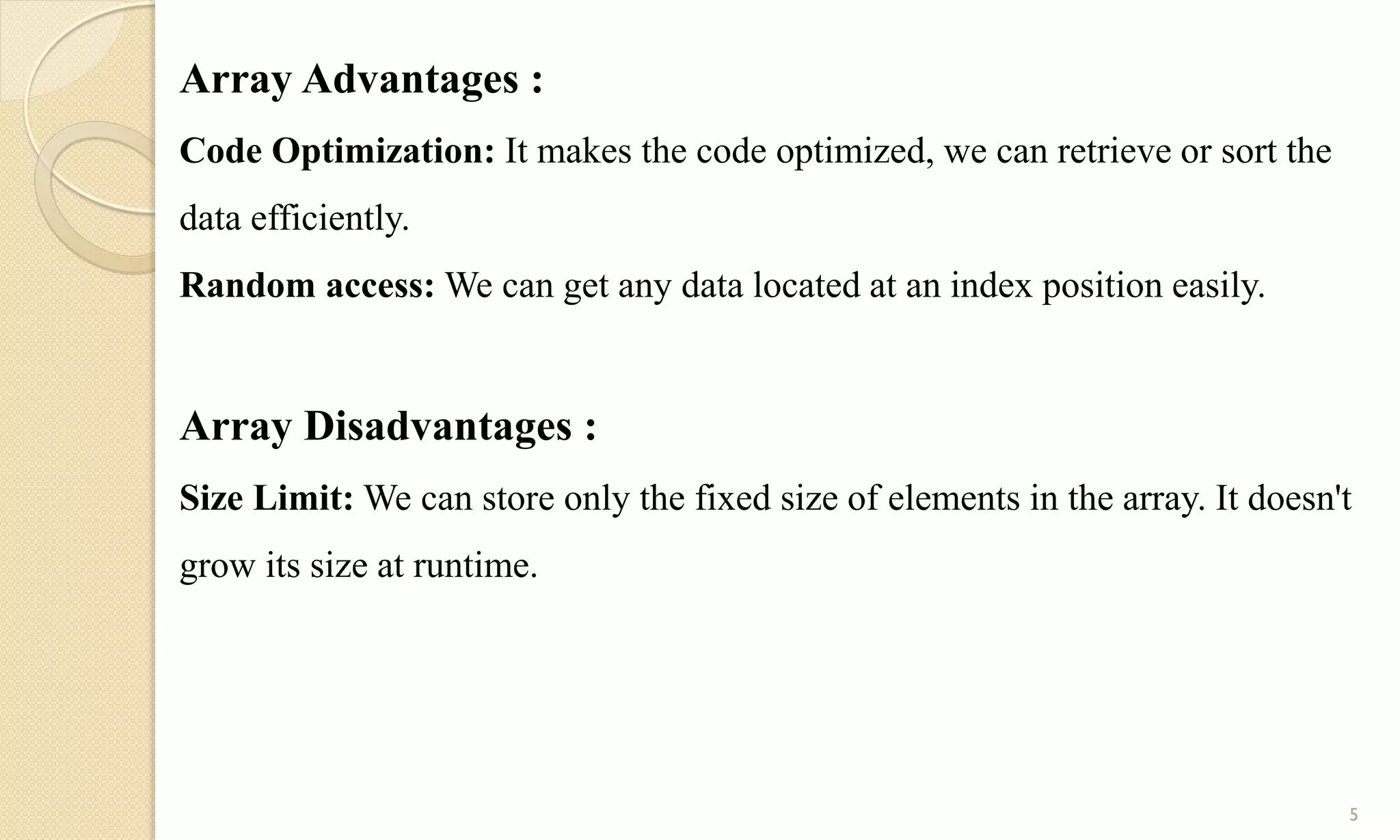
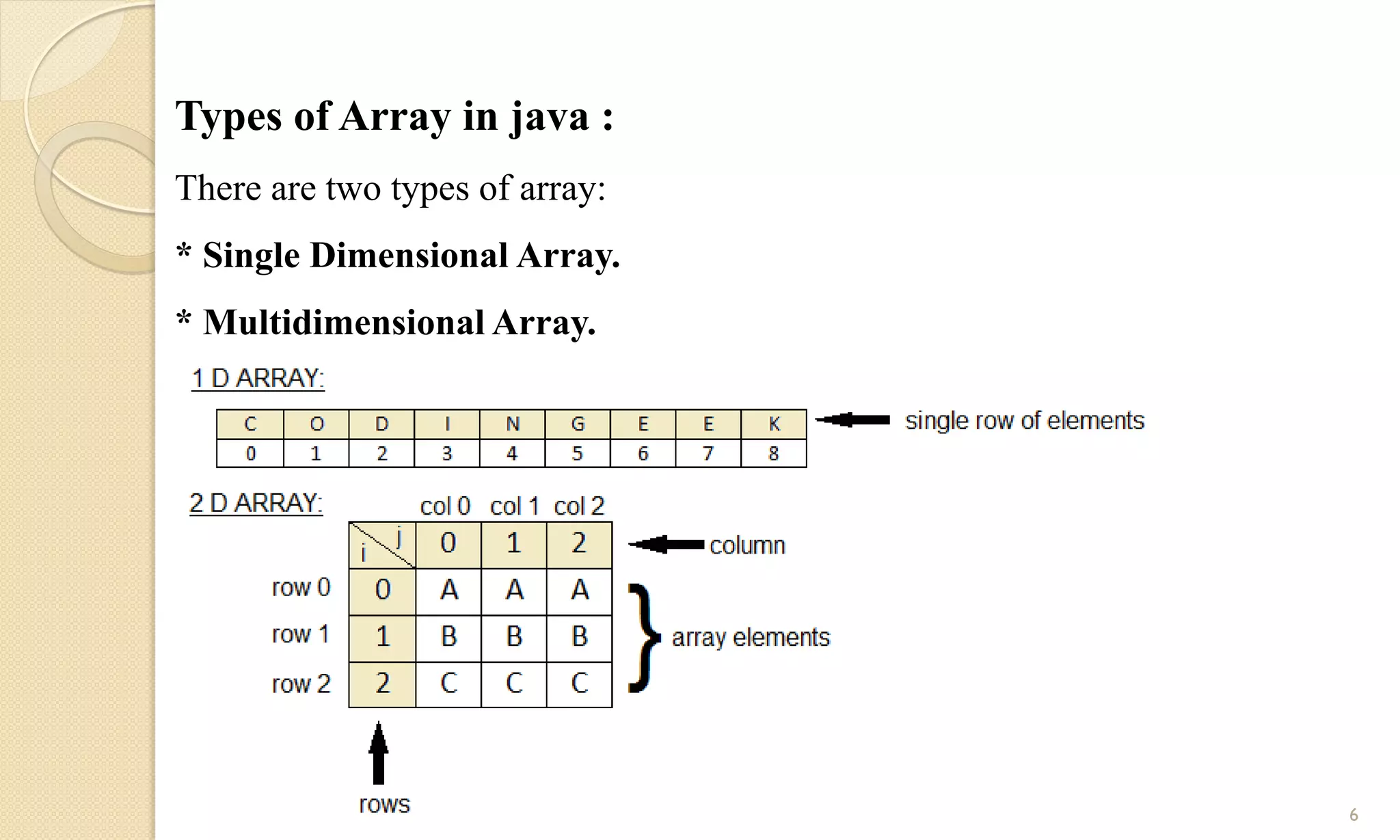
![1.One-Dimensional Array in Java (1-D) :
One-dimensional array(1-D): It is a single array that holds multiple values of the
same type.
Declaring 1D Array :
To use an array in a program, you must declare a variable to reference the array,
and you must specify the type of array.
Syntax to declare an array in java will be like one of them :
dataType[ ] arr ; // preferred way.
dataType [ ]arr ;
dataType arr[ ] ;
7](https://image.slidesharecdn.com/oopchapter1-181109134905/75/Arrays-in-Java-7-2048.jpg)
![Creating Arrays:
You can create an array by using the new operator with the following syntax:
dataType[ ] arr = new dataType[arraySize];
Or alternatively you can create arrays as :
dataType[ ] arr = {value0, value1, ..., valuek};
8](https://image.slidesharecdn.com/oopchapter1-181109134905/75/Arrays-in-Java-8-2048.jpg)
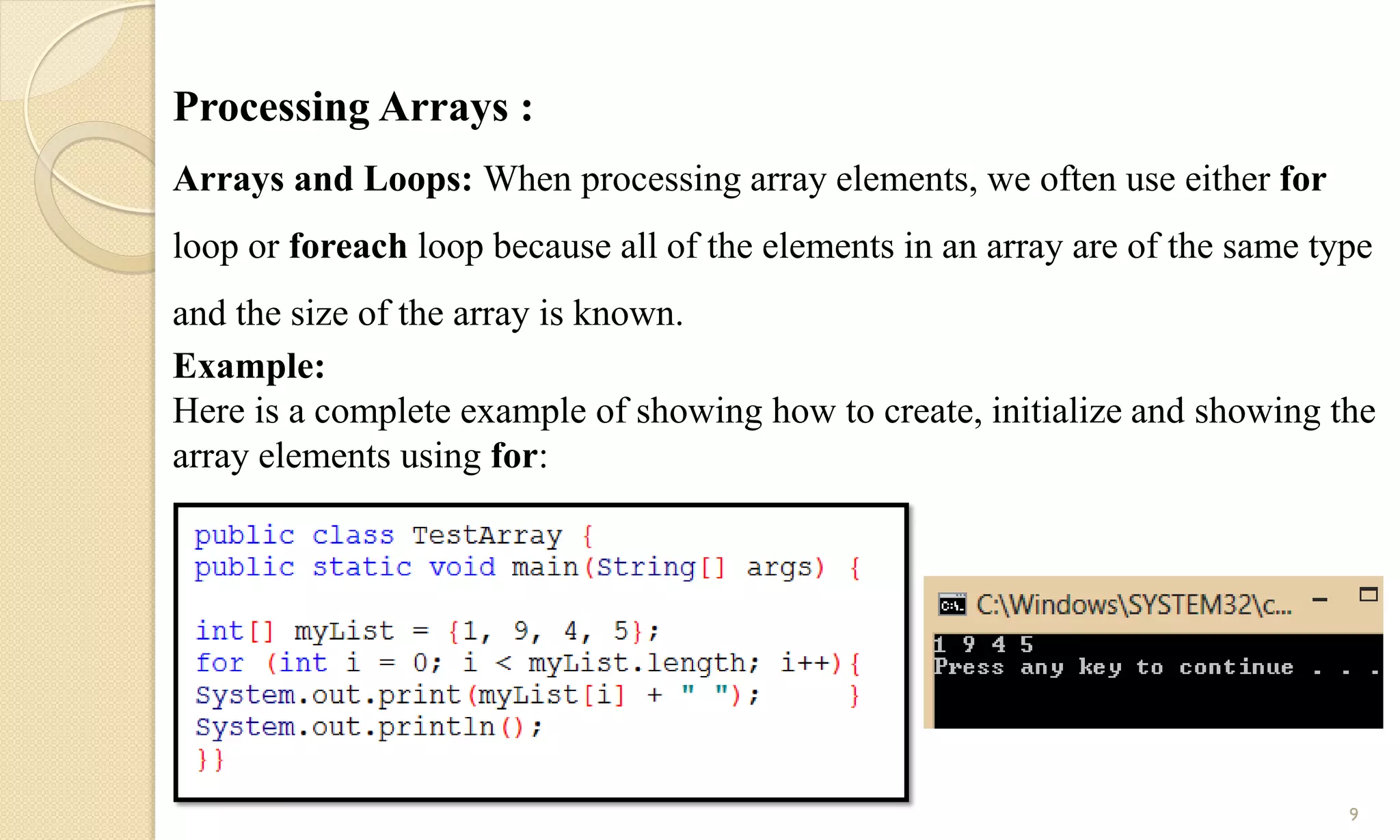

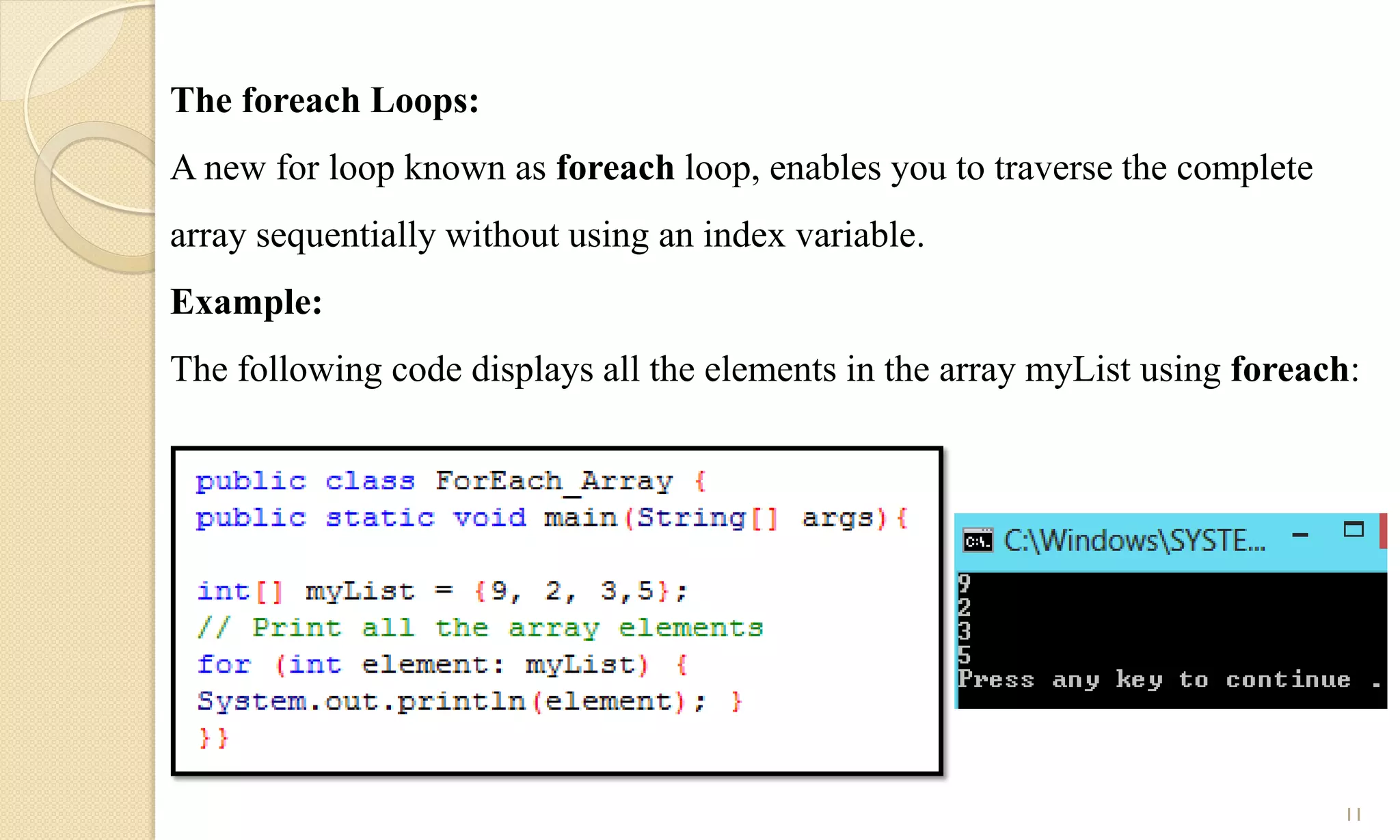
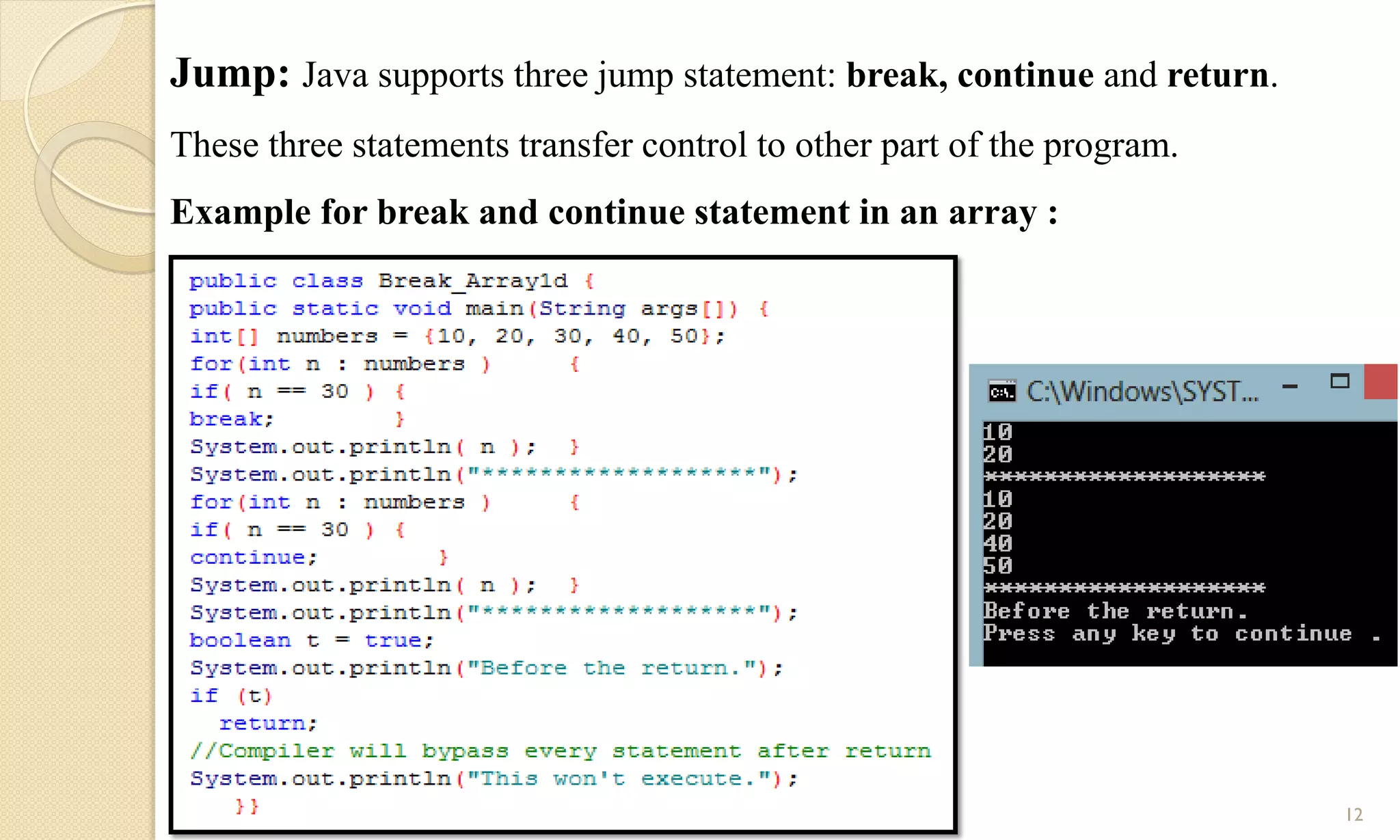
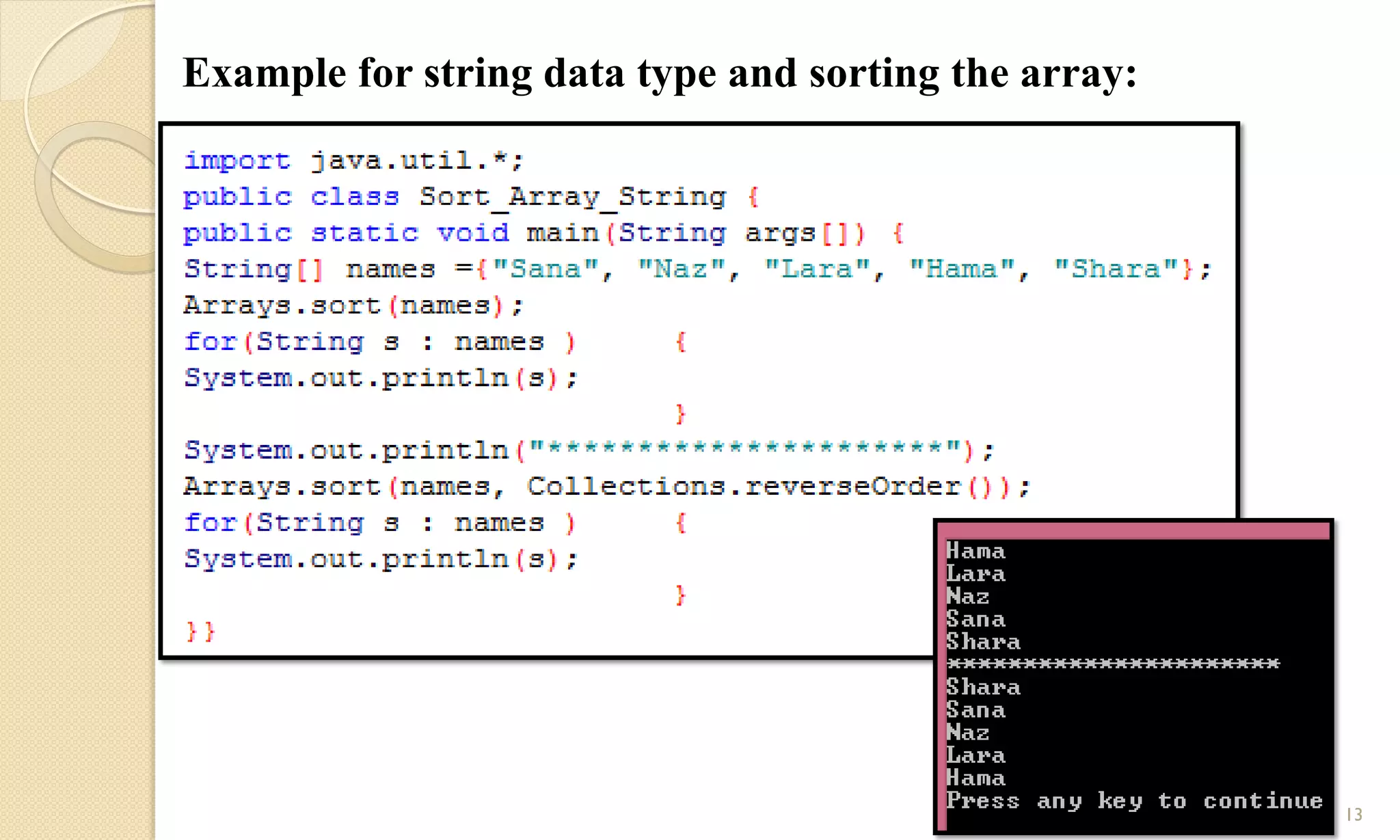
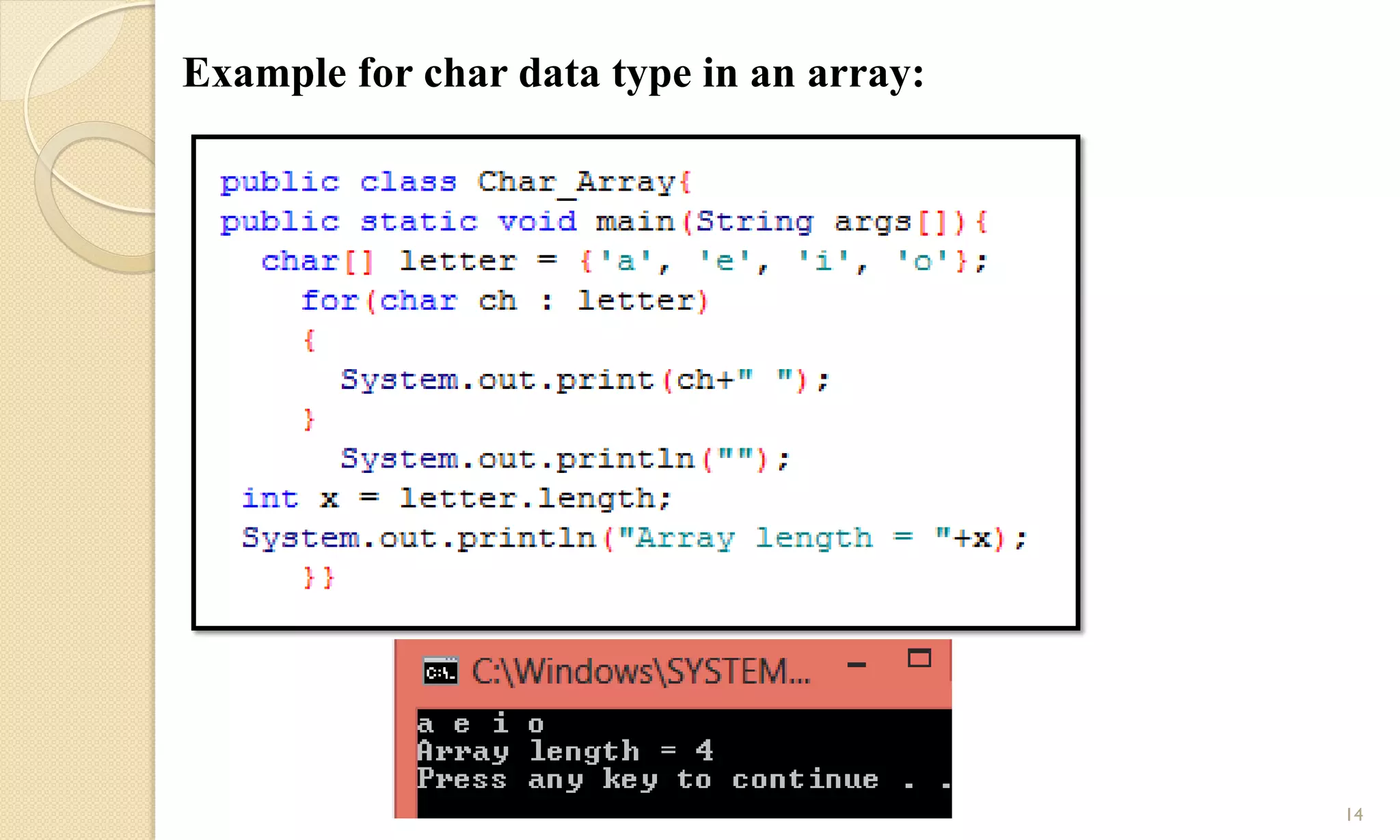
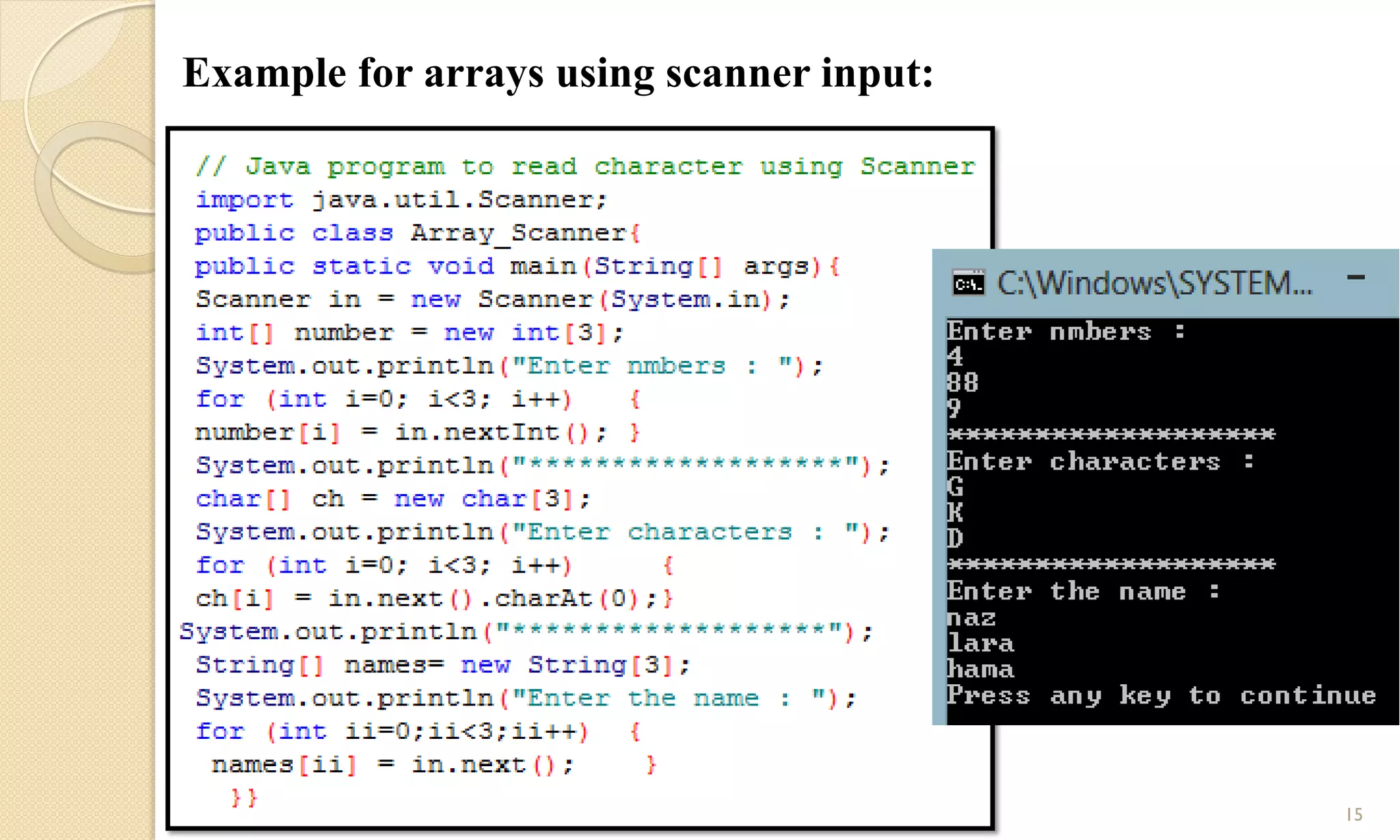
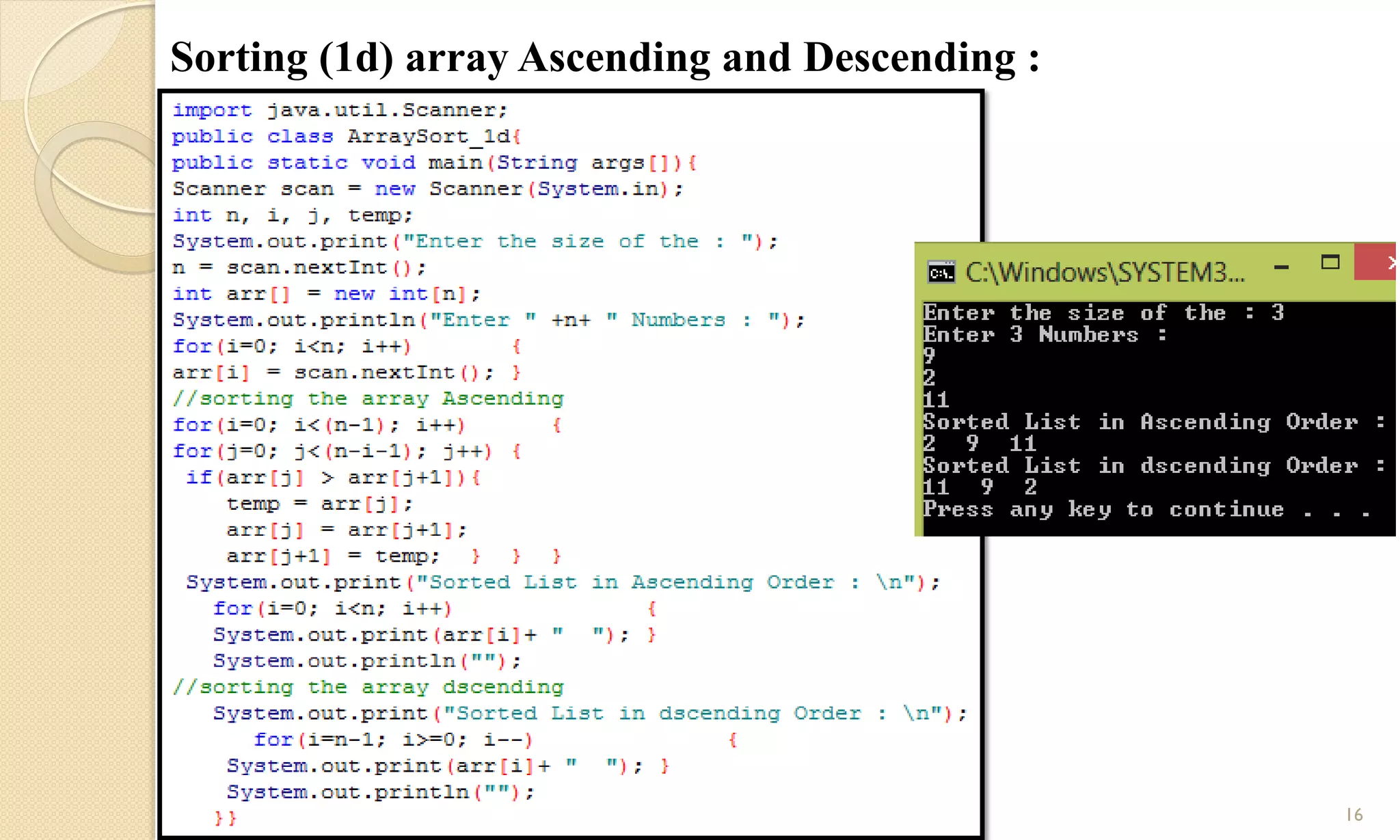
![Multidimensional Array in Java (2D):
In such case, data is stored in row and column based index (matrix form).
Syntax to Declare 2D Array in Java :
dataType[ ][ ] arr ; (or)
dataType [ ][ ]arr ; (or)
dataType arr[ ][ ]; (or)
dataType [ ]arr[ ];
Example to instantiate Multidimensional Array in Java:
int[ ][ ] arr=new int[3][3]; //3 row and 3 column
Example to initialize Multidimensional Array in Java :
arr[0][0]=1; arr[0][1]=2; arr[0][2]=3;
arr[1][0]=4; arr[1][1]=5; arr[1][2]=6;
arr[2][0]=7; arr[2][1]=8; arr[2][2]=9; 17](https://image.slidesharecdn.com/oopchapter1-181109134905/75/Arrays-in-Java-17-2048.jpg)
